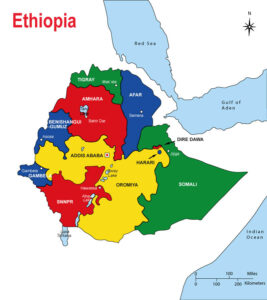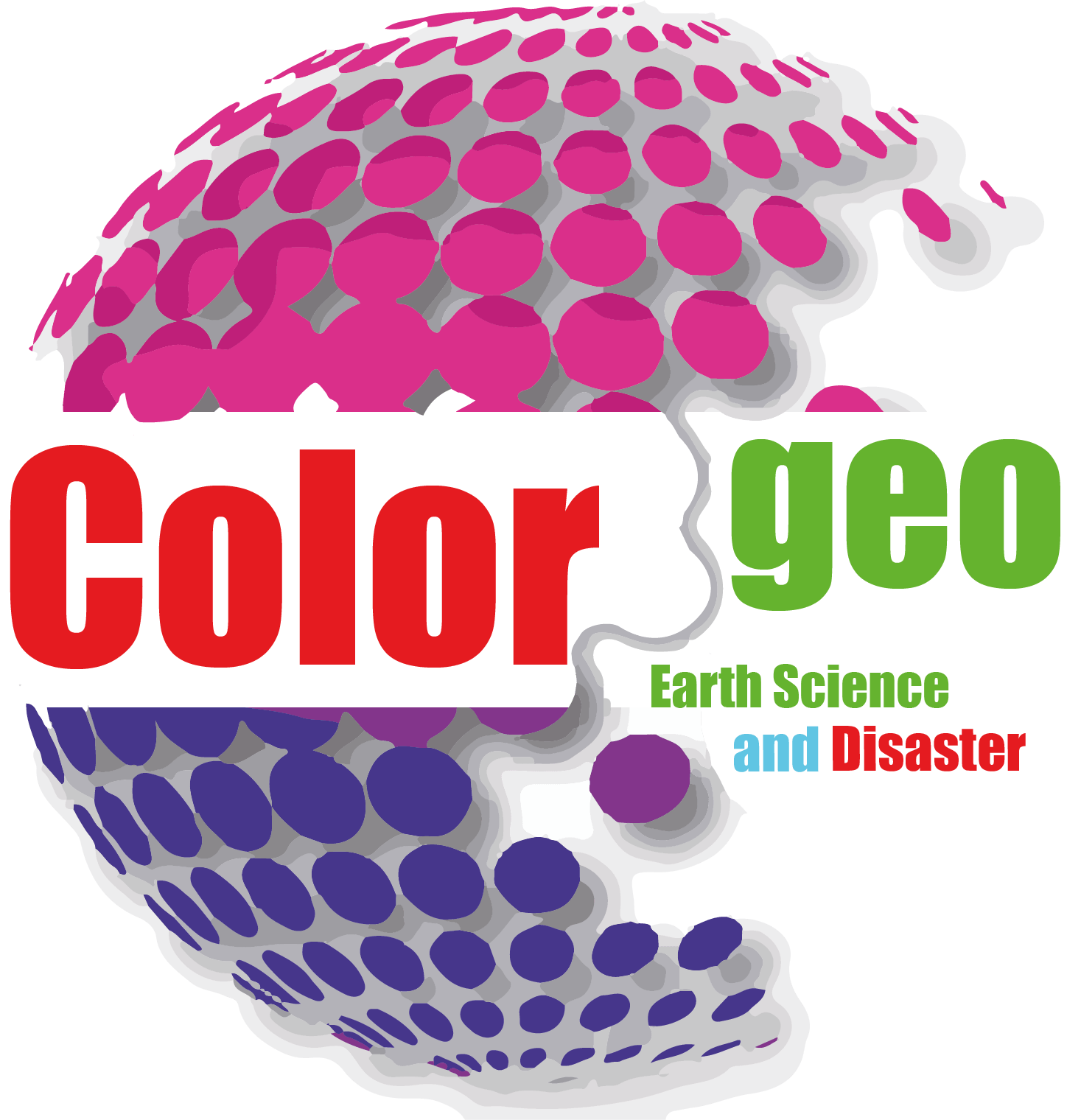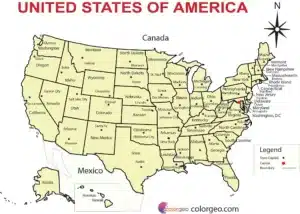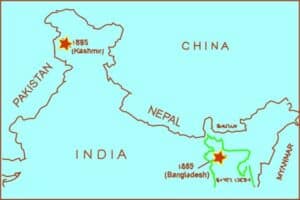Ghana on a map: 10 Things you need to Know.
Unveiling Ghana on a Map: An Analytical Perspective
Ghana on a map is a fascinating subject that holds the key to unraveling the beauty and diversity of this enchanting West African country. Exploring Ghana on a map not only helps in understanding its geography but also uncovers the rich history and cultural tapestry that makes it a truly unique destination. In this article, we will delve deep into the significance of Ghana on a map, exploring its diverse regions, historical landmarks, and captivating stories.
The Geographical Marvel of Ghana on a Map
Ghana’s geographical location is an essential aspect that has shaped its history and influenced its growth. Situated on the Gulf of Guinea in West Africa, Ghana shares its borders with Togo to the east, Burkina Faso to the north, Ivory Coast to the west, and the Atlantic Ocean to the south. The country’s location along the coast has been a crucial factor in its historical prominence as a trading hub in ancient times. This unique geographical positioning has played a pivotal role in the country’s socio-economic development.
Discovering the Regions of Ghana
When exploring Ghana on a map, one can’t help but notice the diverse regions that make up this beautiful nation. The country is divided into 16 administrative regions, each offering its own distinct charm and cultural heritage. From bustling urban centers like Accra and Kumasi to the serene landscapes of Volta and Brong-Ahafo, each region has its own story to tell.
A Historical Journey
Ghana’s history is an intriguing saga that unfolds as we trace its path on the map. The land that is now Ghana was once home to ancient empires like the Ghana Empire, the Mali Empire, and the Ashanti Empire, which thrived on the trade of gold and other valuable commodities. The coastal regions of Ghana witnessed the arrival of European explorers and traders, leaving a lasting impact on the culture and society of the region.
The Cultural Kaleidoscope
One cannot truly grasp the essence of Ghana without exploring its rich cultural diversity. From the colorful festivals celebrated across the country to the soul-stirring rhythms of traditional music and dance, Ghana’s cultural heritage is a treasure trove waiting to be discovered. The people of Ghana are warm and welcoming, and their traditions are deeply rooted in their everyday lives.
A Journey Through Time: Ghana’s Landmarks
Ghana on a map is adorned with historical landmarks that bear witness to the country’s past glories. Cape Coast Castle, a UNESCO World Heritage Site, stands as a poignant reminder of the transatlantic slave trade era. The bustling markets of Kumasi, particularly Kejetia Market, showcase the vibrant trade that has been the lifeblood of the city for centuries.
Nature’s Bounty of Ghana on a map
Beyond its cultural and historical significance, Ghana boasts awe-inspiring natural beauty. From the breathtaking waterfalls of Wli to the serene beaches of Busua, nature has blessed this land abundantly. Ghana’s national parks, such as Mole National Park and Kakum National Park, are havens for wildlife enthusiasts and offer a glimpse into the country’s diverse ecosystems.
A Melting Pot of Flavors
No exploration of Ghana on a map would be complete without savoring its delectable cuisine. From the spicy goodness of jollof rice to the mouthwatering fufu paired with aromatic soups, Ghanaian cuisine is a delight for food lovers. The country’s culinary scene reflects its cultural diversity, with each region boasting its own unique dishes and flavors.
Embarking on Your Own Journey
In conclusion, Ghana on a map is more than just lines and boundaries; it is a journey through time, culture, and nature. As you set out to explore this captivating country, keep an open mind and a curious heart. Let the stories embedded in the landscapes, landmarks, and people of Ghana enrich your experience and leave you with memories that will last a lifetime.
Sustainable Tourism and Ghana on a Map
As we continue our analytical journey through Ghana on a map, it is crucial to address the importance of sustainable tourism. The growing interest in Ghana as a travel destination brings both opportunities and challenges for the country’s environment and communities. Responsible travelers play a significant role in preserving Ghana’s natural beauty and cultural heritage for generations to come.
Promoting Cultural Exchange
Traveling to Ghana on a map is not just about sightseeing; it’s an opportunity to engage in meaningful cultural exchange. Interacting with locals, participating in traditional ceremonies, and supporting local artisans all contribute to the preservation of Ghana’s rich cultural identity. By fostering mutual understanding and respect, travelers can become ambassadors of Ghana’s culture, promoting its beauty beyond its geographical borders.
Empowering Local Communities
When exploring Ghana on a map, it is essential to be mindful of the impact our travels have on local communities. Responsible tourism focuses on empowering local residents economically and socially. By staying in locally-owned accommodations, dining at local eateries, and supporting community-based projects, travelers can contribute directly to the well-being of Ghana’s people.
Protecting Natural Heritage
Ghana’s landscapes, from lush rainforests to pristine beaches, are part of its natural heritage. Protecting these ecosystems is crucial for the well-being of the country and the planet. Responsible travelers can minimize their ecological footprint by following eco-friendly practices, such as avoiding single-use plastics, participating in beach clean-ups, and respecting wildlife and their habitats.
Supporting Sustainable Initiatives
Several organizations and initiatives in Ghana are working tirelessly to promote sustainable tourism and conservation efforts. By supporting these initiatives, travelers can make a positive impact on Ghana’s environment and communities. Whether it’s volunteering for a reforestation project or contributing to a local conservation fund, every effort counts in preserving Ghana’s natural wonders.
Capturing Memories, Leaving Footprints
As you embark on your journey through Ghana on a map, take the time to capture the memories that resonate with you. Share your experiences, photographs, and stories with others to inspire responsible travel and appreciation for Ghana’s beauty. Let your footprints be those of respect, admiration, and care for this enchanting nation.
Conclusion
In this analytical exploration of Ghana on a map, we’ve discovered the multifaceted nature of this West African gem. From its diverse regions and historical landmarks to its vibrant culture and natural bounty, Ghana offers a rich tapestry of experiences for every traveler. But with this privilege comes responsibility – the responsibility to travel sustainably, respect local cultures, and protect the environment.
As you embark on your journey through Ghana on a map, remember to embrace the human aspect of travel. Engage with the people, immerse yourself in their traditions, and leave behind only footprints of positivity. By doing so, you can contribute to the preservation of Ghana’s natural and cultural heritage for future generations, ensuring that this mesmerizing destination remains a treasure on the map for years to come.
I have expanded on the article to highlight the importance of sustainable tourism and responsible travel practices when exploring Ghana on a map. If you need any further modifications or have specific topics to cover, please let me know, and I’ll be happy to assist.

Ghana on World Map
Ghana on a Wall MAP
Ghana on a Political Map








More Stories
Map of Southwest USA
Palestine Vs Israel Supporter by Countries
Kenya Map Digital Map of Kenya EPS 794 KB